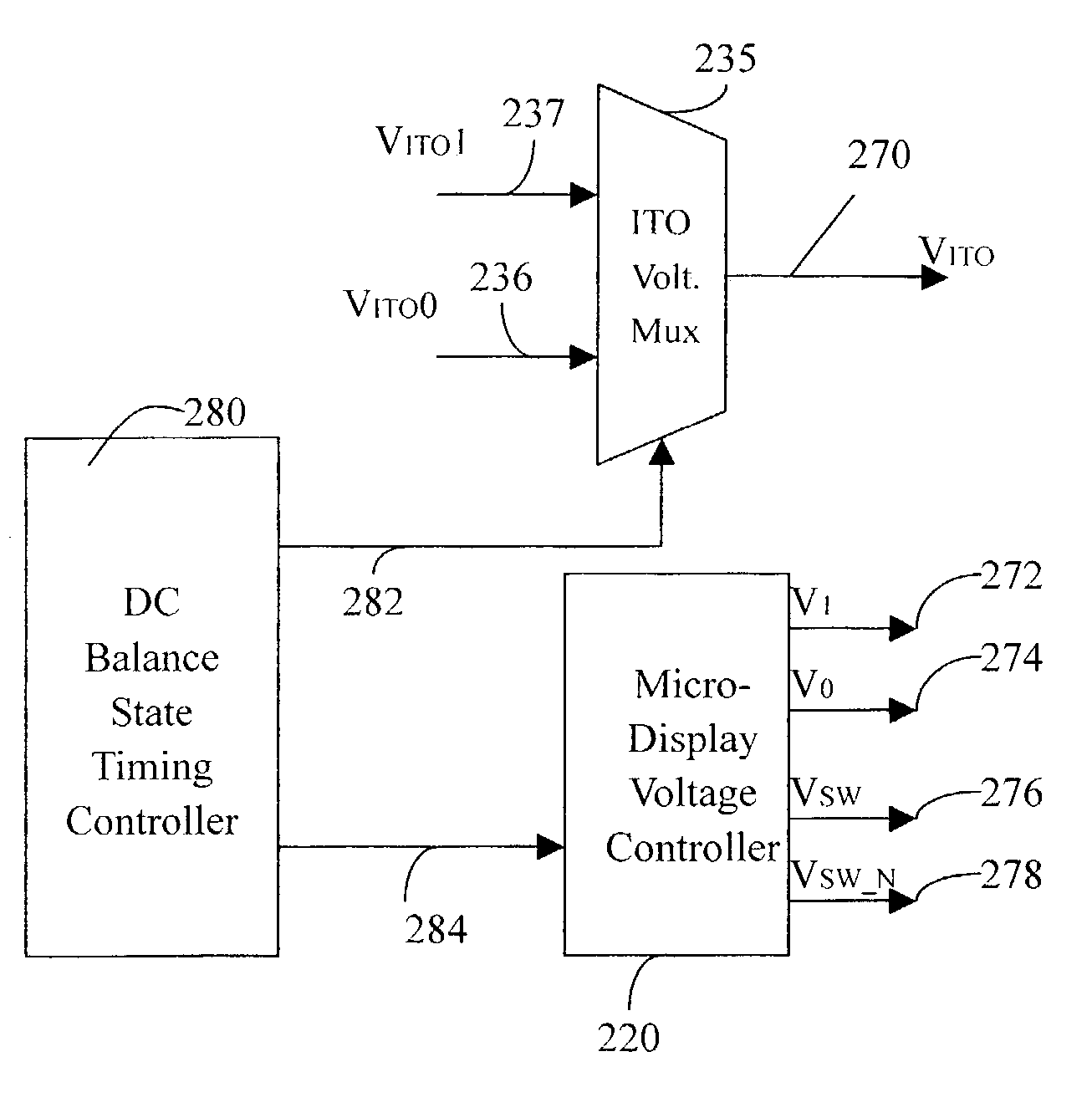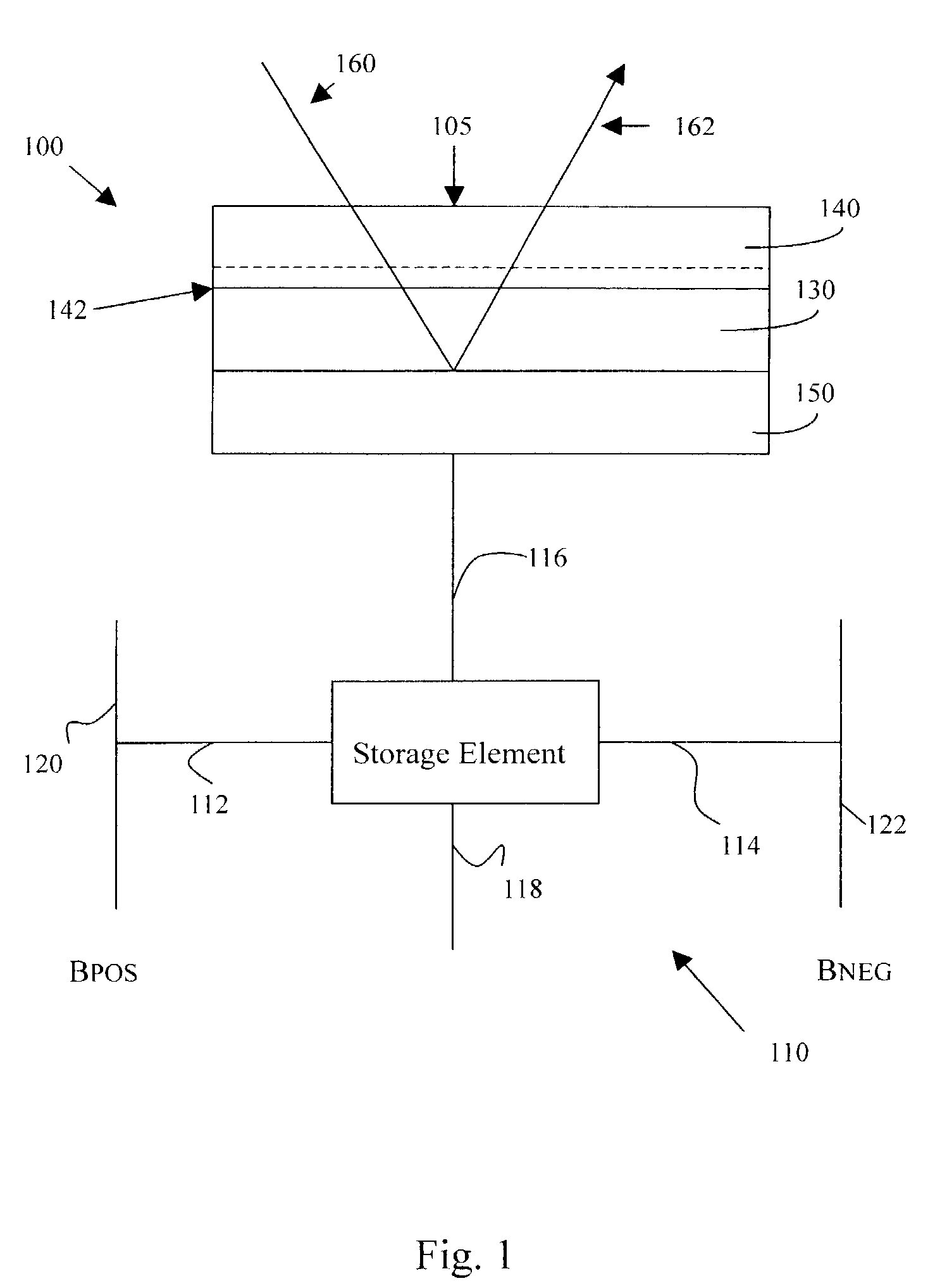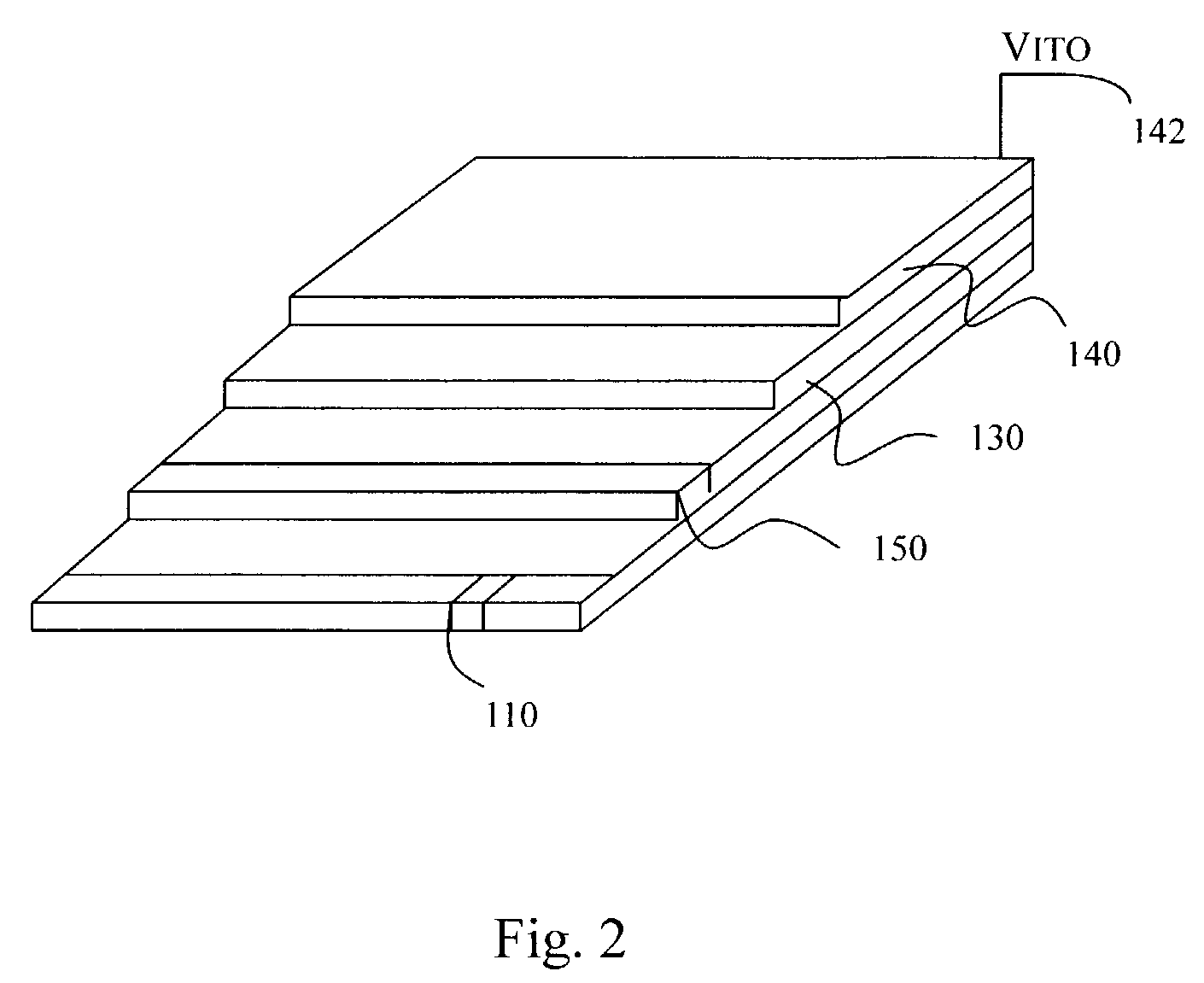Method and device for driving liquid crystal on silicon display systems
a liquid crystal display and liquid crystal technology, applied in the field of driving mechanisms for liquid crystal on silicon display, can solve the problems of not meeting one or more of the challenges of most liquid crystal devices disclosed in the art, prone to a particular class of problems, and not providing the flexibility needed, so as to slow down the dc balancing rate, and reduce the possibility of dc offset effects and image sticking problems
- Summary
- Abstract
- Description
- Claims
- Application Information
AI Technical Summary
Benefits of technology
Problems solved by technology
Method used
Image
Examples
Embodiment Construction
[0037]FIGS. 1 and 2 show the general construction of a liquid crystal on silicon (LCOS) micro-display panel 100. A single pixel cell 105 includes a liquid crystal layer 130 in between a transparent common electrode 140, and a pixel electrode 150. A storage element 110 is coupled to the pixel electrode 150, and includes complementary data input terminals 112 and 114, a data output terminal 116, and a control terminal 118. The storage element 110 is responsive to a write signal placed on control terminal 118, reads complementary data signals asserted on a pair of bit lines (BPOS and BNEG) 120 and 122, and latch the data signal through the output terminal 116. Since the output terminal 116 is coupled to the pixel electrode 150, the data (i.e. high or low voltage) passed by the storage element 110 is imparted on the pixel electrode 150. The pixel electrode 150 is preferably formed from a highly reflective polished aluminum. In the LCD display panel in accordance with the present inventi...
PUM
 Login to View More
Login to View More Abstract
Description
Claims
Application Information
 Login to View More
Login to View More - R&D
- Intellectual Property
- Life Sciences
- Materials
- Tech Scout
- Unparalleled Data Quality
- Higher Quality Content
- 60% Fewer Hallucinations
Browse by: Latest US Patents, China's latest patents, Technical Efficacy Thesaurus, Application Domain, Technology Topic, Popular Technical Reports.
© 2025 PatSnap. All rights reserved.Legal|Privacy policy|Modern Slavery Act Transparency Statement|Sitemap|About US| Contact US: help@patsnap.com



